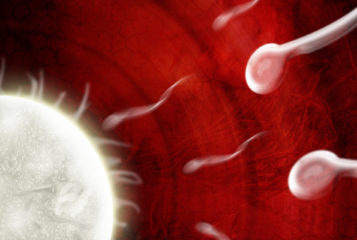|
Precious Babies: Pregnancy, Birth and Parenting after Infertility By Kate Brian Published by Piatkus Books ISBN-10: 0749954019, ISBN-13: 978-0749954017 Buy this book from Amazon UK |
As an informal guide to having children after fertility problems, Precious Babies has much to recommend it. There is, however, an omission which, as a donor conceived (DC) person, I found particularly troublesome — the book is entirely devoid of DC voices.
Quotes from parents and 'experts' are scattered throughout but the words of DC people are nowhere to be found. This lack of representation is even reflected in the title, with its emphasis squarely on babies.
Babies cannot speak. They rely on their parents to make decisions for them. However, early infancy is only a fraction of our lives. Babies will grow to become adults with their own independent thoughts and feelings about the method of their conception.
Many DC people are fed up of forever being seen as children; it is patronising and disempowering. The author shows a belated willingness to include the viewpoints of people conceived by assisted conception — towards the end of the book there are interviews with seven young people conceived via IVF — but this only makes the lack of dialogue with DC people all the more apparent.
The section of Precious Babies that concerns DC people — the chapter on donor families — is irrepressibly upbeat. Donor families are, we are told, closer than most other families. There are DC adults who are angry and find the method of their conception difficult to accept, but that is because they found out about their origins, often by accident, later in life. The author is clearly keen to present a positive picture of life after donor conception but her argument is disingenuous — the academic literature actually suggests a far more complex reality.
In 2009 Vasanti Jadva and her colleagues found that DC people who find out about their origins as adults are significantly more likely to report feelings of anger, confusion, shock and numbness than those told as children (1). Yet the following year this was countered by a study led by Patricia Mahlstedt investigating the attitudes of 85 DC adults. Roughly half of these people had been told about their conception before the age of 18, but their attitudes towards their conception were evenly distributed from 'very good' to 'very bad' (2).
The idea that donor families generally function better than other types of families comes from the research of Susan Golombok at Cambridge University. Several studies she conducted using a standardised questionnaire suggest that donor mothers tend to express greater warmth towards their children (3, 4, 5).
Yet these studies were not without flaws. Firstly, it is questionable how accurately a questionnaire can measure a concept as human and slippery as maternal warmth. Secondly, the level of warmth in donor families seems to be the wrong thing to look at if we want to establish whether or not DC people are happy with the means of their conception. The participants in Marlstedt's study must have benefited from this increased warmth but it didn't stop many of them viewing their conception negatively. Much more research needs to be done before we can say with confidence that donor conception is never damaging for the people it creates.
I can't help but feel that the author was afraid to ask DC people about their lived experience of donor conception in case the answers didn't fit in with what the readership would like to believe: that infertile couples can cure their infertility by any means possible and everything will shake down just fine.
All that said, donor conception is just one route to having a baby - one most prospective parents will not go down. In all other respects this book has a lot to offer. It covers many issues that anybody having a child after infertility may face, such as feeling pressure to be a perfect parent. Its tone is relaxed and engaging and there are lots of real-life case studies. I'm sure many parents will be reassured by reading it. DC people, however, may not be.
Read Kate Brian's response to this review of her book Precious Babies: Pregnancy, and Jenny Dunlop's review of the book from a counsellor's point of view.
Buy Precious Babies: Pregnancy, Birth and Parenting after Infertility from Amazon UK.
Sources and References
-
2) The views of adult offspring of sperm donation: essential feedback for the development of ethical guidelines within the practice of assisted reproductive technology in the United States
-
1) The experiences of adolescents and adults conceived by sperm donation: comparisons by age of disclosure and family type
-
3) Families Created by the New Reproductive Technologies: Quality of Parenting and Social and Emotional Development of the Children
-
4) The European study of assisted reproduction families: family functioning and child development
-
5) Parenting Infants Conceived by Gamete Donation






Leave a Reply
You must be logged in to post a comment.